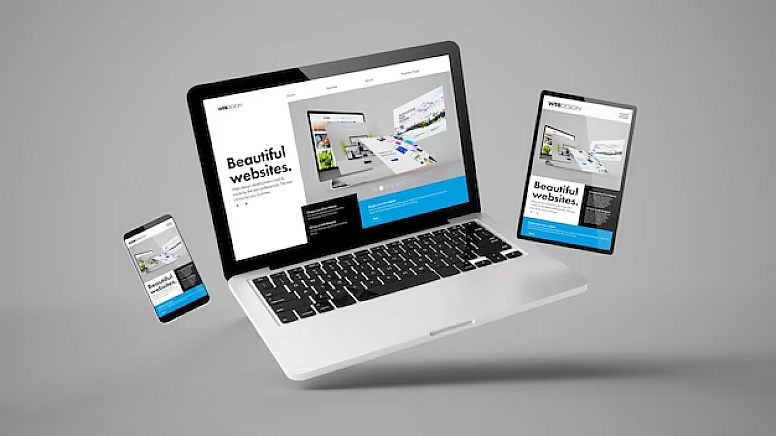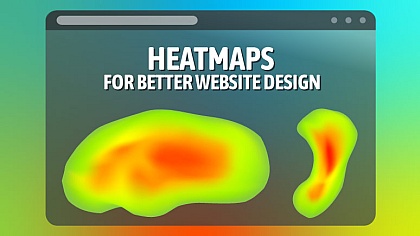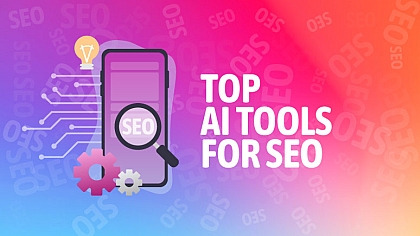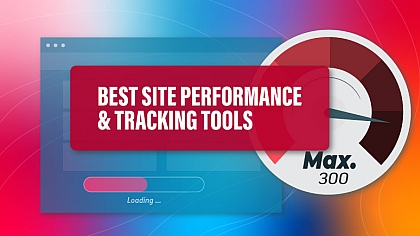
How a Well Designed Website Can Make You Top in Google
Take a moment to consider the websites you've come across that boast exceptional UX/UI. They are visually appealing, load quickly, possess an intuitive interface, offer seamless navigation, and rarely encounter glitches or moments that leave you puzzled.
It's worth noting that UI and UX also play a significant role in search engine optimization (SEO)—even more so in the present day. Google continually updates its algorithm to align its search engine results page with the preferences and expectations of its users. In today's digital landscape, users seek out an intuitive, straightforward, and seamless experience, be it on mobile or desktop. Consequently, Google factors site UI/UX into its ranking criteria.
The Page Experience Update of 2022 primarily focused on UI/UX. Google explicitly stated during the release of this update that elements such as HTTPS compatibility, page loading speed, and "first Contentful paint" hold importance in determining rankings.
We will elaborate on how well UI/UX-designed websites can make you top in Google search results. You can get in touch with a web designer for more information.
User Experience & User Interface: Why are they crucial?
Without a positive user experience, even the most informative or exceptional products and services fail to attract users. After all, a good user experience relies on a strong user interface; otherwise, there's nothing to experience in the first place.
But why do UX & UI matter for SEO?
Numerous factors influence SEO:
• High-quality and engaging content
• Internal links connecting relevant pages within your site
• Backlinks from credible websites
• Careful keyword selection, focusing on specific targets
• Website speed, as Google disfavors slow-loading sites
• Mobile readiness, ensuring your site is easily readable on mobile devices
These factors fall into two categories:
• On-page SEO: This involves optimizing each page for specific keywords you wish to rank for. It entails creating exceptional content or delivering an outstanding experience for your visitors while effectively communicating to search engines the keywords you want your page to rank for.
• Off-page SEO: This refers to actions taken outside of your site that impact SEO. Primarily, it involves backlinking, which aims to enhance a website's credibility by acquiring links from other websites.
Almost every aspect of on-page SEO intersects with UX and UI. You can hire a web designer for the best website design services.
UX vs. UI: What distinguishes them?
Although UX and UI often get intertwined and used interchangeably, they represent different facets of design. UX focuses on determining what users desire to achieve, while UI aids them in accomplishing those goals.
UI designers amalgamate graphics, interactions, and branding to create optimal layouts. UX designers, on the other hand, determine the most appropriate layout based on what their customers find most enjoyable. UI encompasses the tangible elements and visual appearance of a site, while UX encompasses the overall experience of interacting with it.
UX: Is the site easy to use and comprehend, or does it lead to frustration? User experience encapsulates the overall interaction users have with a company's products or services. Good UX design is determined by how effortlessly users can engage with each aspect of a product or service.
Following a web designer’s best practices enhances user interactions and shapes positive perceptions of products and services.
UI: User interface refers to the visual layout of an application or website. Any visual element, such as buttons, headings, or links, as well as interactions like scrolling, clicking, or leaving the page, form part of the user interface. UI designers strive to create layouts that users adore, enticing them to engage with the actions designed by their UX counterparts.
Their role involves transforming conceptual content and layouts into attractive, intuitive, and responsive interfaces for users.
Why does UX matter for SEO?
SEO is influenced by how navigable, responsive, and user-friendly your site is. Even if you possess top-tier information from the most authoritative sources, if users don't enjoy the experience of using your site or consuming your content, achieving a high ranking becomes an uphill battle.
To assess the impact of UX on your site's SEO, consider asking yourself the following questions:
• Why are my customers not clicking this button?
• How can I encourage users to scroll to the bottom of the page?
• Have I provided enough information to address my users' inquiries?
• At which point on this page should I introduce this new feature?
• Why are users hovering over this content section without clicking the call to action?
• What is the loading speed of my site?
• Is each page enjoyable to use, especially for first-time visitors?
• How can users seamlessly transition from a blog article to a purchasing page?
Once you have addressed these questions and devised a clear plan of action for improvement, the next step involves enhancing the user interface.
Why does UI matter for SEO?
Websites with appealing aesthetics and intuitive navigation tend to retain users for longer periods compared to those lacking such attributes. A clean and functional UI helps maximize your website's SEO value. You can hire a web designer for professional website design services.
Strive for a simple, uncluttered web design with a clear page hierarchy, ensuring a smooth transition from one page to another. Some adhere to the "3-click rule," suggesting that users should be able to accomplish any action on your website within three clicks.
Additionally, evaluating the backend of your site, which includes factors like page size, loading speed, responsive design, and playable videos, is equally vital.

How can UI & UX be improved for SEO?
UX and UI are closely intertwined and share many overlapping elements, which is why they are often confused in the context of SEO. The primary objective of both UX and UI is to keep users engaged with individual pages, your entire site, and the interactive elements present. To achieve this, focus on the following key areas to ensure that UX and UI have a positive impact on your SEO efforts:
1. Website Speed:
Would you prefer to use a slow website with an outdated theme or a lightning-fast site with a superb user interface? Site speed is a crucial aspect of a satisfying web experience. In fact, the longer it takes for a web page to load, the higher the chances of users leaving your site. If your site takes more than 5 seconds to load, you risk losing 40% of your traffic. Strive to ensure your site is reasonably fast, particularly by leveraging UI design elements that contribute to swift loading.
2. Ease of Use:
Simplicity is key when it comes to making your website or app user-friendly. Each page should clearly communicate the actions users can take and guide them in accomplishing their desired tasks seamlessly. Avoid cluttering your site with excessive graphics or animations, as they can hinder users from achieving their goals.
Web designers maintain an intuitive and easily navigable website hierarchy and navigation structure.
3. Accessibility:
Web design encompasses accessibility considerations within the UX and UI realms. The Web Content Accessibility Guidelines (WCAG), managed by the W3C, provide internationally recognized guidelines for digital accessibility. UX and UI designers should take all user needs into account to create effective user experiences, contributing to an inclusive web environment.
4. Mobile Readiness:
Optimizing your website design for mobile usage is crucial. Mobile devices are the primary means through which users access Google, and as a result, Google now prioritizes mobile-first indexing when ranking pages. Consequently, it is imperative to ensure that your site loads correctly on mobile devices, offering a seamless reading and navigation experience for mobile users.
In conclusion, UX, UI, and SEO work in unison to help users accomplish their goals. Given their shared objective, UX and UI significantly influence a website's SEO and Google rankings, making them vital considerations in your SEO efforts. Continually seek ways to enhance user experience, as design elements that facilitate ease of use and engage users will undoubtedly yield positive results.
The convergence of web development and UX/UI design has paved the way for an array of no-code tools, empowering businesses and marketers to improve their UX and UI for SEO, and creating sites that resonate with their customers.
Collaborate with a web designer today for the latest website design techs and trends.














